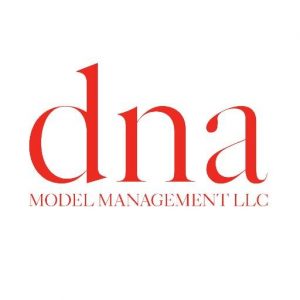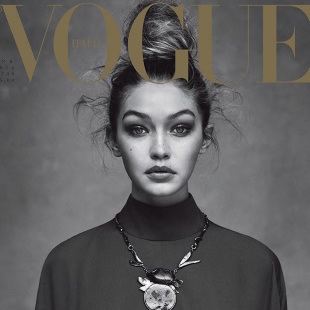There is no foolproof way to tell dangerous from safe photographers. Even the most professional can have hidden personality issues that make them dangerous, and some who, on the surface, appear questionable may turn out to be just fine. Circumstances that seem safe (a known studio, another model at the shoot, and a photographer who even has his own “model safety” website) can be disastrous. But a model can greatly improve her odds by paying attention to danger signs that tend to point to problem shooting situations.
Quality of Presentation
Someone who cares about his work and the way it is presented is less likely to be a problem than someone who doesn’t. A professional-looking web site, with excellent pictures, effective graphics and well-written text is a sign of someone who cares about his craft. A site or email riddled with spelling and grammatical errors, or which makes excuses for the quality of the pictures shown, is much less likely to come from someone whose motivation is quality work.
Allowances have to be made for special considerations like a photographer who is not a native-speaker of English, for instance – but the less literate the email, the more caution a model should show when dealing with a photographer.
Tone of Communications
A photographer who is abrasive in email isn’t likely to be better in person. Claims of great things a photographer can do for a model should be treated with extreme skepticism, if not as danger signs. If a photographer makes a point of how much a model will be missing by not working with him, it’s also a danger sign. Shoots aren’t that important; good photographers can find good models without wild claims, abusive or threatening communications or control tactics.
Emails and telephone calls should be clear, not evasive, without overtones of bluster, bravado or threat. A shoot should be a cooperative effort between model and photographer. If communications aren’t that way, it’s reasonable to worry about what will happen at the shoot.
Type of Communications
Most Internet photo shoots start off as emails. It’s natural to keep them that way, and sometimes there is good reason. But in the “real world” at least some part of the conversation is always by phone or in person, and it should be for Internet models too. At some point in the negotiations for a shoot, models should insist on talking to the photographer or client on the phone. He should be happy to give them his business, home or cell phone number. If he isn’t, it’s a red flag.
On the other hand, there are some photographers and “model managers” who insist on telephone calls. They want to use the call to manipulate the model, often in very misleading or abusive ways, without leaving a written record of it. If a photographer insists on a telephone call at the outset of the conversation, that’s a red flag. The communications ought to use both forms, with email being used for preliminary investigations, and the telephone to finalize agreements (perhaps with a confirmatory email to follow up.)
Type of Shoot
The more intimate the intent of the shoot, the greater the possible risk. An Internet photographer who wants to do “fashion”, commercial or portrait types of pictures is less likely to be a danger than one who prefers nudes, particularly “erotic” nudes. There are not many perfectly safe, excellent photographers in all kinds of photographic specialty, but greater care is called for in some kinds of work than in others.
A model should ask a photographer exactly what he has in mind for a shoot, and to use the answer to evaluate the dangers it may present. The greater the level of detail, the better. Sometimes a contact between a photographer and a model starts off with neither of them having a particularly clear idea of what they want to do together. A photographer may see a model’s web page, decide he wants to work with her, and plan on deciding exactly what to do with her as the conversation develops. There isn’t anything dangerous about this, but it is wise for a model to try to refine her understanding of the photographer’s intent as the discussion progresses.
Of particular concern is fetish photography. By its very nature it may involve both nudity and bondage or physical restraints, and may even be deliberately painful to some degree. A model may find herself with no effective means of self defense in some fetish shoots – she is entirely at the mercy of the photographer’s good will. In addition, some fetish photographers use the fetish itself to play out their own psychological issues – leading to the possibility of unanticipated incidents in the studio.
It’s easy to overstate this danger, since there are many fetish photographers who are entirely benign, and who can produce excellent work. Still, this type of shoot is one that should be undertaken only with great care. New models, who aren’t sophisticated about the Internet culture or photography, are well advised to be exceedingly cautious about fetish work. Only those with considerable personal maturity and self confidence should pursue the field.
Identification
When asked, a photographer or client should have no hesitation about fully identifying themselves. That should include full (personal or corporate) name, physical address and contact telephone numbers. It should also include URLs for their website or a good explanation for why they don’t have one. If it is a business, it should be described in specific terms. Vagueness and evasion on any of these issues are strong danger signs.
Meeting
If at all possible, the model should meet with the photographer or client before the shoot. It’s absolutely amazing how impressions can change between an email and a personal encounter. All of us have evolved sensitivities to body language, eye contact and demeanor that add enormously to the literal meaning of words spoken.
References
For clients or photographers who primarily have a web presence, it should be relatively easy to find references from others who have worked with them. For mainstream professional photographers and clients, it’s a lot less likely that they will have (or be willing to share with you) references that you can check on. The people least likely to be a problem are the most likely not to be able to demonstrate it.
The Internet culture supports people checking up on each other, and understands why it is done. Most Internet models will find nothing odd about another model asking questions. Photographers who typically use Internet models will understand this also, and the request will not seem untoward. For those kinds of people it is a good idea to ask for verifiable references, and a possible danger sign if they are not given. Even if references are given, you need to be sure who they really are. One of the tricks of scammers and stalkers is to give out reference names and email addresses which really are themselves under another name, often with freebie email addresses such as yahoo, aol, hotmail or gmail.
As an alternative to asking for references, a model can find them for herself. This is preferable, since she will know for sure who she is actually getting the information from. If a photographer’s website shows an email address or other contact information for other models he has worked with, you can follow those to contact them directly. If his models are active on the Internet, other photographers or models in the area are likely to recognize them, even if credit is not given. Networking with others to do that research is very useful.
“Real world” clients and photographers are understandably reluctant to give references to web models. The last thing they want is their clients or other (non-Internet) models to be calling, asking about them and if they are safe to work with. The very question is a red flag to them, since it is not customary off the Internet. In addition, photographers and clients are obligated to preserve the privacy of their models; they cannot normally give out contact data for them to third parties. Even if you can identify them for yourself, it is very poor form to contact them directly, and you can expect a negative reaction to doing so.
In such cases the model can use a surrogate approach: determining the status of the client or photographer in the industry. Do they have a variety of published tearsheets? A solid client list? Are they listed in mainstream professional reference sources? Do they have a Yellow Pages or Business Pages listing? Are they known to other photographers or models that you know? If so, the probability is much greater that you can shoot with them without concern.
Shoot Location
The safest location is one that is public, frequented by lots of other people, and widely known to others. The most dangerous is one that is private, secluded and virtually unknown. Unfortunately, safe, public sites are inappropriate for many kinds of photography, so compromises have to be made. It is common for TFP or other Internet shoots to be in a hotel room or the photographer’s residence, and that doesn’t necessarily mean there is a safety issue. Still, in evaluating their safety concerns and responses, models need to understand the proposed location, and take it into account.
Others at the Shoot
Having someone else, particularly another woman, at the shoot gives a much greater probability of safety than a one-on-one. A makeup artist, stylist, photo assistant or other crew member is very desirable for other reasons also – in fact, for most commercial or fashion style shoots if a makeup artist isn’t part of the team the outcome is of doubtful utility anyway. If a photographer refuses to allow a makeup artist or other crew member to be present on such a shoot, even at the model’s cost, the risk is a good deal higher. (Some shoots, like “art”, don’t require a makeup artist, and a photographer might reasonably object to having to get one.) Like the other “danger signs” in most cases a one-on-one turns out not to be a problem, but it is an additional indicator that needs to be factored into a model’s decision-making.

Model Safety
03.06.2023
Internet modeling by its very nature is much less safe than mainstream. Many of the clients whether for paid or TFP shoots) are not professi

CHRISSY TEIGEN, THE COMMERCIAL SUCCESS STORY
04.06.2022
With a majorly popular (and sometimes controversial) twitter presence, Sports Illustrated model Chrissy Teigen is having a moment. Cosmopoli




